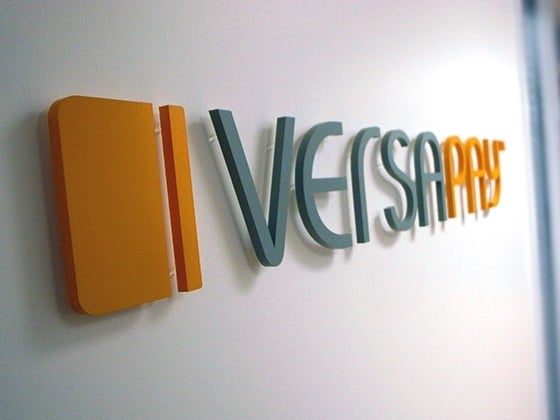

The pivot. The act of changing your business from one thing to another is a tricky bit of stickhandling, but for some companies the transition is more plausible than others.
Change your business from bitcoin miner to search engine king? Not very likely. But use your Point of Sale Merchant Services business payments to fund a cloud based solution for accounts receivable? Okay, show me what you’ve got.
Vancouver-based VersaPay has an established history with a stable business, but that wasn’t enough for its revamped management team led by Craig O’Neill, who took the reigns of VersaPay in August of 2013. The company is now laser focused on an opportunity for a new product called ARC, a cloud-based accounts receivable software it thinks can be impactful in a multi-billion dollar annual market.
Cantech Letter talked to VersaPay CEO Craig O’Neill about the company’s ongoing transition.
Craig, can you explain how what VersaPay did in the past differs from what it intends to do in the future?
Absolutely Nick. VersaPay is a very different company today. If you looked at us prior to a couple of years ago you would have found a Point of Sale Merchant Services business – that is, we were in the business of selling and implementing credit card processing services and point of sale equipment to merchants ranging from online travel sites to retail stores. Today VersaPay is a software company in the Business-to-business integrated payments space. That is, we sell cloud-based software solutions for B2B that provide payments capabilities along with business functionality.
You came to the company in late August of 2013. What have you accomplished in the time since?
It’s been an eventful time for the company. Much of the transformation from Merchant Services to Software company has happened during this time. We’ve built a world-class software organization and relocated it to a new development centre in Toronto, we’ve introduced an exciting new flagship product, ARC, into the market and successfully implemented several early adopter customers, built a great pipeline of new business, and done a couple of rounds of financing. And all the while we’ve kept our Merchant Services business healthy and growing.
We believe our target market – that’s B2B sellers in the US and Canada that range in size from 10 million in annual revenue to 1 billion in annual revenue – represents a market opportunity of well over 4 billion dollars of annual recurring revenue.
How big is the business-to-business integrated payments space and how much penetration has there been from next generation solutions?
That’s a great question, and it really speaks to the future of the company. Most players in the electronic payments space see B2B as the last frontier of exceptionally high growth for electronic payments. Every payments company I talk to is either developing a strategy for B2B or its high on their to-do list. That’s because the market is huge, and much of it is untouched. VersaPay has an early start, and we’ve approached the market by solving a business problem that integrates electronic payments, rather than simply attempt to convince business to transact electronically. We believe our target market – that’s B2B sellers in the US and Canada that range in size from 10 million in annual revenue to 1 billion in annual revenue – represents a market opportunity of well over 4 billion dollars of annual recurring revenue. And that’s a very specific segment of the market. Overall B2B integrated payments is much bigger than that.
You can name them or not, but walk us through one example of a client adopting ARC, from before they had it to afterwards…
I’ll talk about a customer that we’ve just announced this morning – Metroland Media Group. Metroland sends approximately 1 million invoices a year to organizations that advertise in their newspapers. Prior to rolling out ARC they would email or mail these invoices and then wait for a response. In other words, they do what most companies do. If the due date passed without payment, an A/R person would call or email the customer. Fairly often their question would be met with a question – can you send me another copy as I don’t seem to have the original? When the payment did come in, an A/R person would manually reconcile that with the outstanding invoices (because business customers will pay multiple invoices at a time, and also short pay invoices if they have an issue with them), contact the customer again if the reconciliation was unclear, and finally, book the payment into their accounting system to close the invoices in question. So lots of manual work, and lots of time to get from point A to point B – from invoice sent to invoice paid. With ARC, this is all so much simpler and faster. Invoices automatically get published to a secure portal. Customers get notifications that invoices are waiting. They come in to the portal to see the invoices and any supporting documentation, collaborate with Metroland if there are questions or issues, and of course, pay online. ARC automatically reconciles the payment with the associated invoices and enters the results into the accounting system. The result: most of the manual effort and much of the time is eliminated. So Metroland gets paid faster, and even better, their customers are happy about it. One of Metroland’s A/R personnel received a call from a municipal government accounting person to “say how much everyone here loves this new system”.
Job One is to win new customers onto ARC and make them raving fans. We have eight customers live right now and expect to be around forty by the end of this year, then well over a hundred by the end of 2016.
Where do you expect your gross margins to be in two years and why?
Our gross margins will move from the level that’s typical for a Merchant Services business to that of a cloud-based software company as the software business grows. Gross margins on the software subscription fees will be in the 90% range whereas the payments revenues will continue in the 60% range.
We’ve seen everyone from The Beer Store to Teachers Life, an insurance provider adopt ARC. Is there a vertical or type of business that ARC works well for, or is it more about the size of the company?
The beauty of the ARC market opportunity is that it encompasses any company that sells to other companies on account. What’s more, some of the B2B features we’ve built aren’t available in business-to-consumer ebilling systems, so we have opportunity in the B2C space as well. So really, saying the market opportunity is huge is not overstating the point. Having said all of that, we are following a vertical market strategy as we go-to-market, simply because we can leverage the integration work and our customer references better that way. As we start to get good traction in each of the verticals we’re in we’ll add more verticals.
What will happen to VersaPay’s legacy business?
I like the original business. It gives us a very stable recurring revenue base, nice cashflow to assist in funding the ARC opportunity, and extensive reach into the payments ecosystem that will serve us well as we establish channel partners and processing partners for ARC. So the plan is to keep doing what we’ve been doing since I arrived – keep the business healthy and growing. Not explosive growth, mind you, but moderate growth that maintains our cashflow from the business.
Are there acquisitions you would like to look at? Are you well capitalized enough to make one?
Acquisitions are something we’re keeping an eye on now. As you know, Art Mesher, previous CEO of Descartes Systems Group, became our Chairman last August. Art had an excellent track record over the years of building Descartes through a combination of organic growth and acquisitions. He and I talk about that a lot. We aren’t in a big hurry, and we intend to be very selective so that acquisitions align closely with our B2B integrated payments strategy, but we definitely see that in our future. Currently we’re capitalized very well to execute our organic growth plan. When we identify an acquisition opportunity that we want to proceed with we will address the capital requirements at that time.
You have said you are making a concerted effort to expand your ARC business in the United States. What do you think the geographic breakdown of your sales will look like, ultimately?
I believe our sales will reflect the size of the two markets – so roughly 10 to 1, US business vs Canadian business. We’re already seeing that in the pipeline and in the recent customers we’ve been signing. So I’m one of those Canadians in the minority who like to see the US currency where it is right now. We charge the same prices in the US as Canada, and the bulk of our costs are here at home, so the current FX rate is good for us.
What do you hope to accomplish in the next 12-18 months?
We have a lot in store. Job One is to win new customers onto ARC and make them raving fans. We have eight customers live right now and expect to be around forty by the end of this year, then well over a hundred by the end of 2016. To support that we’ll be expanding our sales and marketing efforts, enhancing ARC with a great pipeline of new features, building over a dozen new connectors to ERP and accounting systems and establishing vertical market partnerships. When we achieve these objectives our transformation into a software company will be complete, and our growth rate and gross margins will look more like those of a young Silicon Valley tech company than a payments business. The last 18 months have been very rewarding and a lot of fun, and I expect the next 18 to be even moreso.
Disclosure: VersaPay is an annual sponsor of Cantech Letter.
Leave a Reply
You must be logged in to post a comment.






 Share
Share Tweet
Tweet Share
Share




Comment